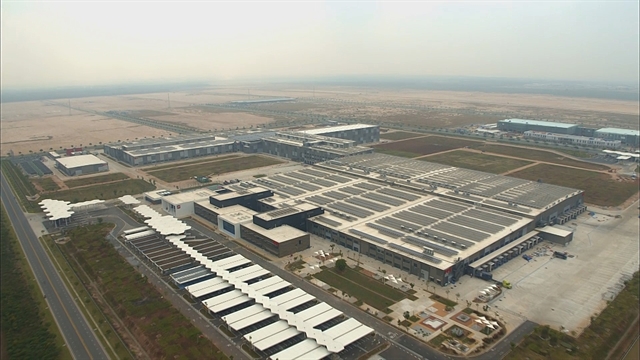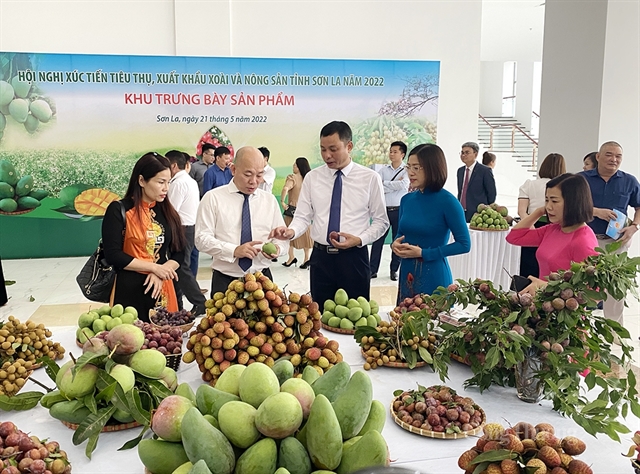 Economy
Economy

 |
| Mango on display during a trade promotional event held in the mountainous province of Sơn La in May this year. — Photo MoIT |
HÀ NỘI — Additional measures must be taken to bring agricultural and handicraft products from mountainous and coastal provinces to cities and provinces across the country, and potentially to international markets, said Deputy Minister of Industry and Trade Đỗ Thắng Hải during a meeting on Wednesday with local representatives from Việt Nam's mountainous and coastal provinces.
He cited a number of successful models that have seen Vietnamese local specialities including Sơn La mango, Sapa salmons, Ngọc Linh ginseng and Đắk Lắk avocado gaining popularity in the domestic and international markets.
He said there was a need to improve trade ties and distributions of goods and services among Việt Nam's 68 cities and provinces.
Promoting local specialities has made a significant contribution to the effort to eradicate poverty, especially in remote and isolated areas, and to the country's socio-economic development.
The deputy leader, however, stressed the importance of taking bold steps and trying new ways to develop and promote local specialities; to improve local economic resilience in light of today's many challenges including climate change and diseases.
The Ministry of Industry and Trade (MoIT) has been working around the clock to promote Vietnamese specialities both in the domestic and international markets with numerous projects and action plans, according to Hải.
Y Thông, deputy chief of the Committee for Ethnic Minority Affairs, said there have been major economic developments in Việt Nam's mountainous and coastal provinces in the last five years, which has resulted in significant improvements in local socio-economic infrastructure.
Successful local products have allowed localities to improve ethnic communities' living standards, reduce poverty and invest more in education, healthcare and social security. Y Thông said MoIT's support has been crucial in helping far and remoted localities find demand and access to markets for their products.
The representatives from Điện Biên, Thanh Hóa and Đắk Lắk urged the central Government to allocate additional resources to support local communities to join the domestic and international supply chains.
They also voiced concern over a number of shortcomings and limitations faced by local communities in the transport and distribution of their products.
Lê Việt Nga, deputy head of the domestic market under MoIT, said the ministry has helped local communities set up trade ties with more than 60 companies specialised in product distribution with access to a large part of the country, as well as the international market.
According to Nga, MoIT has also assisted and provided financial support to two distribution models tailormade for local specialities of the island district of Lý Sơn and Côn Đảo. Trade conventions and promotional events were held regularly across the country by the ministry to help promote local products.
In addition, local specialities have found their way into all major markets and supermarkets in Việt Nam with many being exported to oversea markets.
Hải said the ministry's key objectives remained focused on developing and promoting local products with a competitive advantage, sustainable development of local production and streamlining legal frameworks to support sales of said products in the domestic and international markets.
He urged localities to make additional investments in the implementation of science and technology, quality control, product safety and human resources. He said the central Government has implemented a number of preferential policies to help local communities integrate into the country's supply chain and is fully committed to infrastructure developments in remote and isolated areas. VNS




